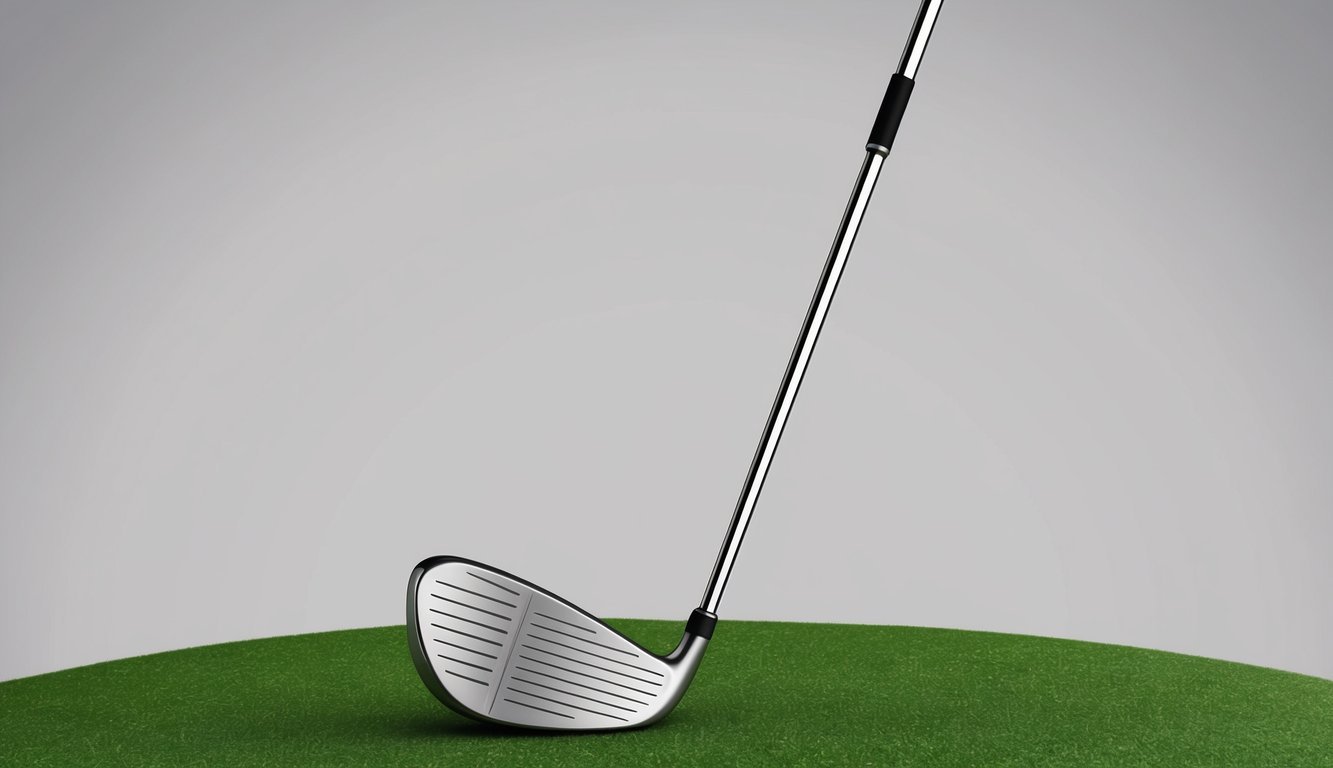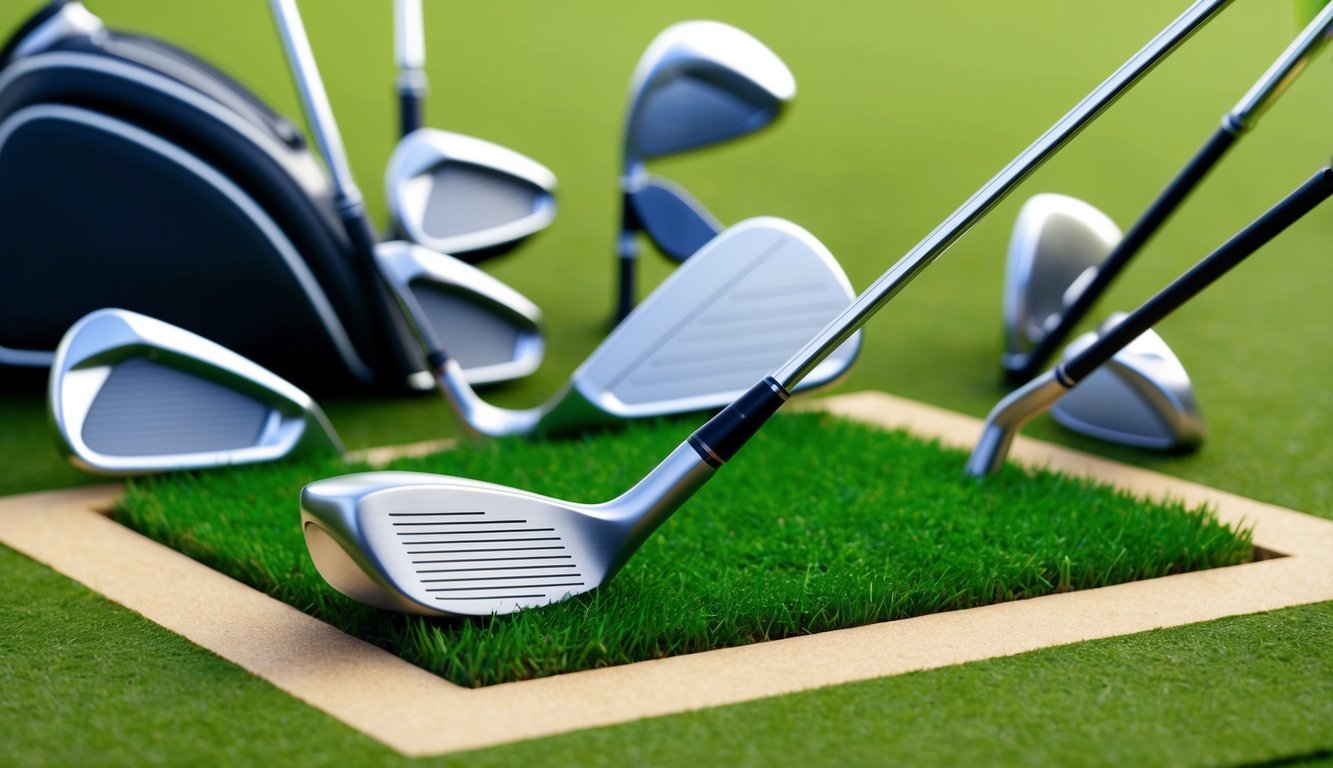When picking a driver, you’ll often encounter various lengths that can impact your game.
The length of the driver shaft greatly influences your swing speed and overall distance.
Most male golfers use drivers with a standard length between 45 and 45.5 inches.
This range offers a balance of distance and control.

Women’s drivers are generally shorter, around 44 inches, due to the average height difference between genders.
Knowing the correct driver length is crucial for optimal performance on the course.
Golfers of any level can benefit from customizing their equipment to suit their individual needs.
Selecting the right driver length helps improve accuracy and distance.
Whether it’s off the shelf or specially fitted, understanding the right fit is key to enhancing your game and confidence on the green.
Key Takeaways
- Standard length for men’s drivers is 45 to 45.5 inches.
- Women’s drivers typically measure around 44 inches.
- Custom fitting enhances accuracy and performance.
Understanding Driver Shafts

Grasping the nuances of driver shafts is vital for enhancing your performance on the golf course.
Key factors include the material and flexibility of the shaft, as well as how shaft length affects your swing and distance.
Material and Flexibility
Driver shafts are crafted from materials like steel and graphite.
The choice between them impacts the shaft’s weight and swing weight.
Graphite is lighter, which may enhance your swing speed.
On the other hand, steel shafts can provide more control but may feel heavier.
Flex is another crucial element.
It refers to how much the shaft bends during your swing.
Options range from extra stiff to senior flex.
More flexible shafts can help increase distance, while stiffer ones might improve accuracy.
Be sure to match shaft flex with your swing speed to optimize performance.
Shaft Length and Its Impact on Distance
Shaft length plays a significant role in your game.
Typically, longer shafts can increase the speed of your clubhead, potentially boosting distance.
However, longer shafts may come at the expense of control over your shot.
The standard driver shaft length is around 45 inches, though it can change based on personal preference and physical attributes.
Your height and wrist-to-floor measurement can guide the ideal length, ensuring a balance between distance and control.
Manufacturers often recommend fitting these specifications to match the player’s unique swing dynamics.
You can explore more on how driver shaft length affects distance and control.
The Importance of Driver Length

Understanding the right driver length can significantly affect your game, influencing control, speed, and the overall efficiency of your swing.
It’s crucial to consider factors such as gender, height, and specific measurement techniques to determine the ideal driver for you.
Standard Driver Length by Gender
Driver length varies between men and women due to average height and physical differences.
Men’s standard driver shafts typically measure between 45 to 45.5 inches.
For women, the standard length is slightly shorter, around 44 to 44.5 inches.
These variations are based on average height differences and aim to optimize swing mechanics for each gender.
Using an appropriately sized driver helps you maintain better control and accuracy on the course.
Leading manufacturers often offer custom fitting options, allowing adjustments based on your unique physique and playing style.
Effect on Speed and Swing Arc
The length of your driver significantly affects both your swing speed and the swing arc.
A longer driver shaft often results in increased clubhead speed, which can enhance distance off the tee.
However, it may also cause a loss of control if not matched to your skill level and physical attributes.
Conversely, a shorter driver may improve control, allowing more consistent contact with the ball but potentially reducing maximum distance.
The balance between speed and control is vital, with many golfers opting for custom fittings to achieve a blend that suits their playing style while maintaining a stable swing arc throughout the impact zone.
Measuring Your Ideal Length
Determining the right driver length involves personal measurements, including your height and wrist-to-floor distance.
This specific measurement offers a more customized approach, considering how your body aligns when you set up for a swing.
To measure, stand naturally with your arms hanging at your sides, then measure from your wrist to the floor.
Golf professionals often recommend custom fittings that involve testing different lengths and styles to find the optimal match.
Using a driver that is too long or too short can impair your performance, making this precise measurement essential for improving your game.
How Shaft Length Affects Performance
Choosing the right driver shaft length plays a key role in your golf game.
It impacts how well you hit the ball and your ability to control your shots.
Accuracy Versus Distance
The length of your driver shaft can significantly influence your accuracy and distance when hitting the ball.
A longer shaft may increase your swing and clubhead speed, potentially adding distance to your shots.
Yet, this might sacrifice accuracy as controlling a longer shaft can be challenging.
Golfers often find that shorter shafts allow for better control and precision, leading to more accurate shots.
However, using a shorter shaft might slow down your swing speed, possibly reducing the distance achieved.
Striking the right balance between these factors is crucial.
Consider your personal swing style and preferences when deciding on shaft length.
Experimenting and testing different shaft lengths can help you find what gives you the best performance for both accuracy and distance.
Finding the Sweet Spot
The sweet spot on your driver is where maximum energy transfer and ball speed occur, leading to optimal performance.
Shaft length can affect how often you hit this area, impacting your control over the ball and overall swing efficiency.
Shorter shafts may make it easier to strike the sweet spot consistently, enhancing control and improving impact.
However, longer shafts can help you increase ball and swing speed, potentially boosting distance—if you maintain good control over your swing.
Testing various shaft lengths and practicing often can help you discover which length allows you to hit the sweet spot more frequently.
This process can enhance your performance, providing better control and the right balance between speed and distance.
Custom Fitting for Optimal Performance
Custom fitting can significantly enhance your game by tailoring your equipment to your unique needs, improving both accuracy and distance.
Consider two vital aspects: the professional club fitting process and the integration of personal preferences and unique swings.
Professional Club Fitting Process
A professional club fitter evaluates several key factors to ensure you’re using the right equipment.
They assess your swing speed, ball trajectory, and wrist-to-floor measurement.
Each of these factors plays a crucial role in determining the optimal club specifications.
You might find that your ideal driver length differs from the industry standard, which often hovers around 45.75 inches.
Weighing in on the specific variables, such as loft and shaft flexibility, ensures you get the most out of each swing and improves those aspects of your game that need attention.
Working with someone like Kevin Sprecher or a similar expert, who employs advanced fitting techniques, can identify equipment that enhances your performance.
Personal Preference and Unique Swings
Your preferences and swing characteristics are equally important in custom fitting.
Every golfer has a distinct style and comfort zone.
Some may prefer a shorter driver for more control, while others may lean toward a longer shaft for additional distance.
A well-fitted club that aligns with your playing style can be instrumental in maximizing performance.
Your unique swing may benefit from adjustments to the club’s weight distribution or the grip size.
Consider alterations based on your playing conditions, too; changes in weather or course type can influence club choice.
By acknowledging these personal factors, you will find a setup that feels right, giving you confidence with every shot.
Rules and Trends in Golfing Equipment

The evolution of golfing equipment is heavily influenced by regulatory bodies like the USGA and R&A, as well as the preferences of professional golfers.
Changes in club design, especially drivers, reflect these influences, showcasing both compliance with rules and trends set by top players.
Regulations by USGA and R&A
The United States Golf Association (USGA) and the R&A play a pivotal role in the golf world by setting standards for equipment.
A notable rule is the local rule that allows competitions to limit driver length to 46 inches.
This change, effective from January 1, 2022, seeks to manage the increasing distance seen in professional tournaments, addressing the long-standing concern over ever-growing driving distances.
Such regulations ensure equipment stays within traditional parameters, maintaining the integrity of the game.
These bodies also examine clubs’ design elements, ensuring they meet specific criteria related to size, weight, and materials.
Adhering to these regulations, manufacturers and golfers, including you, must choose and use equipment that aligns with these guidelines.
Notably, professional fitters incorporate these rules when customizing clubs for players.
Influence of Professional Golfers
Professional golfers like Tiger Woods, Bryson DeChambeau, and Rickie Fowler have a great influence on equipment trends.
Their choice of clubs often sets the benchmark for amateurs and other pros alike.
For example, Phil Mickelson and his use of varying driver lengths have influenced amateurs to experiment.
This has possibly led retailers to stock a variety of lengths and styles.
Professional golfers also collaborate with manufacturers to develop clubs suited to their unique styles.
As you make choices about your equipment, being aware of these trends can inform your decisions, allowing you to align your game with advancements seen in the PGA Tour.
A professional fitter may leverage these insights, tailoring your club specifications to maximize performance at the tee.

